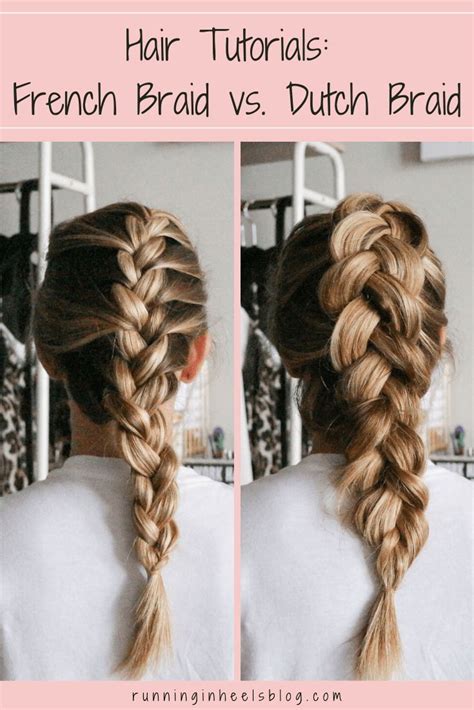Introduction
From intricate updos to casual pigtails, braids have been a timeless staple in styling arsenals for centuries. Two iconic braiding techniques stand out: Dutch braid (also known as “inside-out” braid) and French braid (or “outside-in” braid), each with its unique charm and distinct applications. In this comprehensive guide, we’ll dive into the captivating world of Dutch vs. French braids, exploring their characteristics, advantages, and practical uses to help you choose the perfect braid for every occasion.

Characteristics and Complexity
1. Dutch Braid
- Appearance: Dutch braids resemble inside-out braids where strands are pulled over and under each other instead of under and over like in French braids. This creates a raised, fuller effect that adds volume and texture to hair.
- Technique: Dutch braids start from the crown or nape, with three strands separated and crossed over each other. The side strands are then brought under the center strand and pulled tightly. This process is repeated, with new hair added from the sides as the braid progresses towards the end.
- Difficulty: Dutch braids require a bit more dexterity and coordination than French braids, making them slightly harder to master for beginners.
2. French Braid
- Appearance: French braids are characterized by their elegant, outside-in design where strands are crossed under and over each other. This creates a flat, sleek braid that complements various hairstyles and facial structures.
- Technique: French braids also begin from the crown or nape, with three strands separated. The side strands are crossed under the center strand, and additional hair is picked up from the sides and incorporated into the braid as it moves down the head.
- Difficulty: French braids are generally easier to learn than Dutch braids, making them a suitable choice for beginners.
Advantages and Applications
Advantages of Dutch Braids:
- Volume and Height: Dutch braids create an illusion of fullness and volume, making them ideal for thin or flat hair.
- Secure Hold: The inside-out design of Dutch braids ensures a tight and secure hold, preventing hair from falling out and maintaining the braid’s integrity.
- Variety of Styles: Dutch braids can be incorporated into various updos, buns, and crown braids, adding a touch of elegance and versatility.
Advantages of French Braids:
- Sleek and Elegant: French braids exude a classic, refined look that complements most outfits and occasions.
- Versatile and Protective: French braids are versatile, suitable for both formal and casual settings, and they help protect hair from damage caused by friction and environmental factors.
- Easy to Style: Compared to Dutch braids, French braids are easier to style and maintain, making them a practical choice for everyday wear.
Practical Uses:
- Weddings and Special Events: Both Dutch and French braids are popular choices for weddings and formal occasions, adding a touch of sophistication and allure.
- Everyday Wear: French braids are ideal for keeping hair out of the face while running errands, attending classes, or engaging in physical activities.
- Exercise and Sports: Dutch braids can provide a secure and comfortable way to style hair during intense workouts or sports competitions.
- Hair Protection: French braids can help prevent hair damage from wind, sun, and pollution, making them suitable for outdoor activities and hair care routines.
Tables for Comparative Analysis
| Feature | Dutch Braid | French Braid |
|---|---|---|
| Appearance | Raised, full volume | Flat, sleek |
| Technique | Cross strands over and under | Cross strands under and over |
| Difficulty | Slightly harder | Easier |
| Hold | Tight and secure | Secure, but less voluminous |
| Versatility | High, suitable for updos | Moderate, versatile for various styles |
| Occasion | Dutch Braid | French Braid |
|---|---|---|
| Weddings and Events | Elegant and voluminous | Sleek and polished |
| Everyday Wear | Comfortable and secure | Practical and easy to style |
| Exercise and Sports | Secure and out of the way | Less volum |
